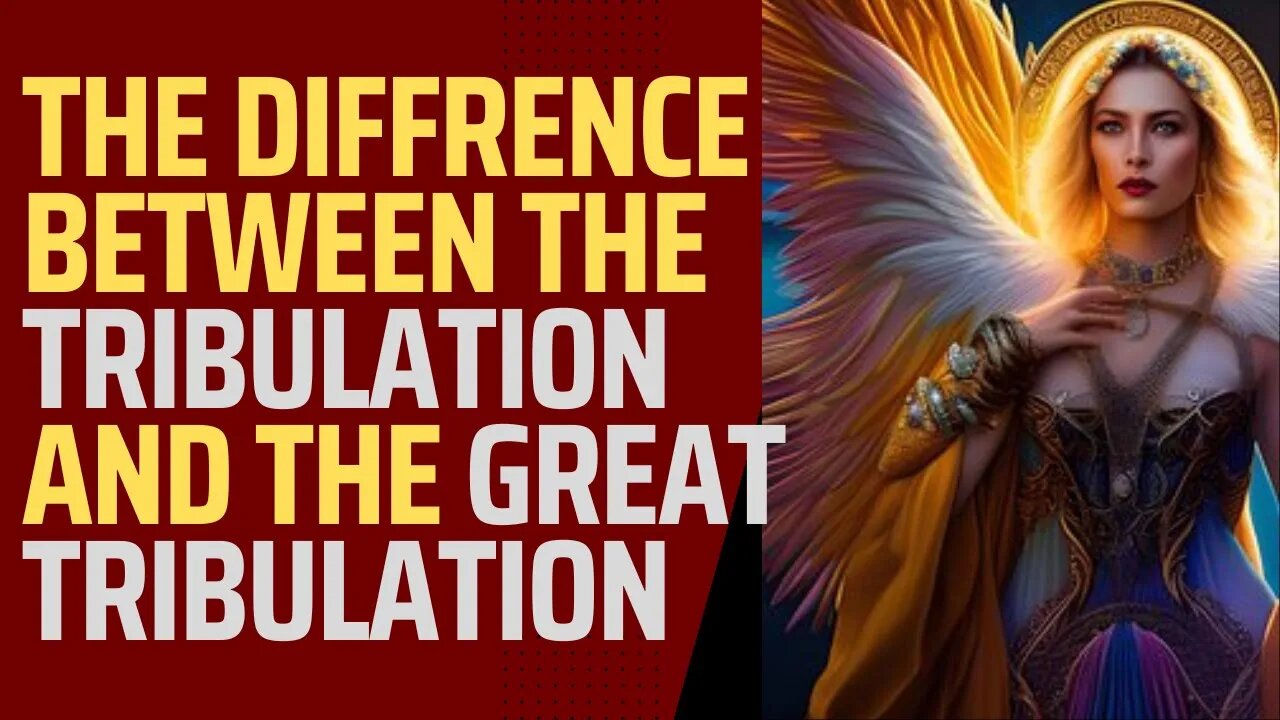Premium Only Content

What is the difference between the tribulation and the Great tribulation
The Tribulation, a foreboding period yet to come, holds within its grasp two distinct purposes.
Firstly, it serves as a means for God to finalize His discipline upon the nation of Israel, as prophesied in Daniel 9:24.
Secondly, it stands as a time of judgment for the unbelieving and godless inhabitants of the earth, as vividly described Revelation 6 to 18.
Stretching across a span of seven years, the Tribulation emerges once the church, often referred to as the bride of Christ, has been lifted from the earthly in an eminent event known as the Rapture.
Following this pivotal moment, the precise timing of the Tribulation's commencement remains a mystery.
The duration of this tumultuous period is intimately linked to the seventy weeks of Daniel, as outlined in Daniel 9:24-27.
The Great Tribulation, the latter half of the overall Tribulation, encompasses three and a half years.
It stands apart from the initial phase by the revelation of the Beast or Antichrist, heralding a heightened intensity of God's wrath.
While the terms "Tribulation" and "Great Tribulation" may appear interchangeable, they hold distinct meanings.
The former refers to the entirety of the seven-year ordeal, while the latter designates the latter half.
Jesus Himself spoke of the "Great Tribulation" in Matthew 24:21, specifically linking it to the unveiling of the Antichrist.
This astounding reality is also discussed in 2 Thessalonians 2:3-4, which was written by the apostle Paul.
A pivotal event entwined with the Great Tribulation is the abomination of desolation, mentioned in various passages.
The Great Tribulation's commencement aligns closely with the revelation of this sacrilegious act.
Moreover, the conclusion of the Great Tribulation coincides with the second coming of Christ, offering a glimmer of hope amidst the chaos.
Daniel 12:1b also sheds light on the Great Tribulation, describing it as a time of unparalleled distress.
It is possible that Jesus alluded to this passage when referencing the Great Tribulation.
Jeremiah 30:7 further expounds on the Great Tribulation, likening it to a time of great distress or Jacob's trouble for Israel,
The beginning of the Great Tribulation or Jacob's trouble intertwines intricately with the actions of the Antichrist,
who forges a seven-year covenant, or peace pact, with both the world and Israel, as detailed in Daniel 9:26-27.
However, halfway through the seven-year period, the Antichrist reneges on this agreement, triggering a shift in events.
The Antichrist's actions predominantly revolve around the prophesied rebuilding of the temple in the future.
Revelation 13:1-10 provides further insights into the Beast's nefarious endeavors,
and it explicitly confirms the duration of his power as 42 months, equivalent to three and a half years.
Within the book of Revelation, significant revelations about the Great Tribulation are unveiled.
It vividly portrays God's wrath unleashed upon the earth in response to widespread unbelief and rebellion, spanning the chapters of Revelation 16 to 18.
Simultaneously, Revelation offers glimpses of God's discipline and protection towards His chosen people, Israel,
leading to the establishment of an earthly kingdom, as depicted in Revelation 14:1-5 and Revelation 20:4-6.
The Tribulation and the Great Tribulation, shrouded in mystery yet unveiled in prophecy, hold immense implications for both Israel and the world.
As the pages turn, the intensity of events heightens, culminating in the ultimate triumph of divine justice and the establishment of God's eternal kingdom.
-
 2:08:48
2:08:48
TheSaltyCracker
11 hours agoLefty Grifters Go MAGA ReeEEeE Stream 12-22-24
194K621 -
 1:15:40
1:15:40
Man in America
14 hours agoThe DISTURBING Truth: How Seed Oils, the Vatican, and Procter & Gamble Are Connected w/ Dan Lyons
115K109 -
 6:46:07
6:46:07
Rance's Gaming Corner
16 hours agoTime for some RUMBLE FPS!! Get in here.. w/Fragniac
157K2 -
 1:30:48
1:30:48
Josh Pate's College Football Show
15 hours ago $10.21 earnedCFP Reaction Special | Early Quarterfinal Thoughts | Transfer Portal Intel | Fixing The Playoff
90K1 -
 23:55
23:55
CartierFamily
3 days agoElon & Vivek TRIGGER Congress as DOGE SHUTS DOWN Government
130K152 -
 5:43:44
5:43:44
Scammer Payback
2 days agoCalling Scammers Live
223K30 -
 18:38
18:38
VSiNLive
2 days agoProfessional Gambler Steve Fezzik LOVES this UNDERVALUED Point Spread!
160K20 -
 LIVE
LIVE
Right Side Broadcasting Network
10 days agoLIVE REPLAY: President Donald J. Trump Keynotes TPUSA’s AmFest 2024 Conference - 12/22/24
2,744 watching -
 4:31
4:31
CoachTY
1 day ago $28.78 earnedCOINBASE AND DESCI !!!!
196K13 -
 10:02
10:02
MichaelBisping
1 day agoBISPING: "Was FURY ROBBED?!" | Oleksandr Usyk vs Tyson Fury 2 INSTANT REACTION
116K16